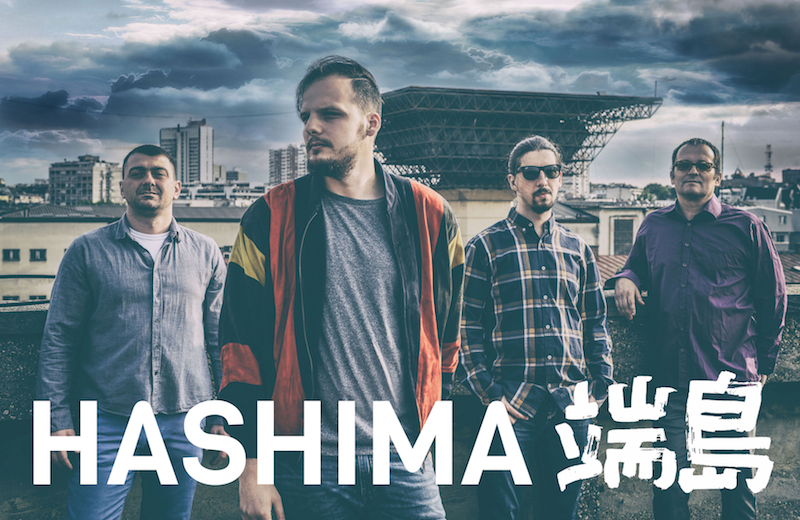

The concept of HASHIMA began as a cycle of poems that were inspired by “ghost island” Hashima photos shown on internet from time to time. Famous Serbian writer Miloš Crnjanski‘s sumatraism with the Sumatra island serving as a symbol of hope for better future, here is developed as a symbol of true devastation of the European spirit and hope for it to be acknowledged and possibly revived. Written by Igor Miškovi?, verses were alternating from “reality” to island in each line.
Musical inspiration for the band came from the annual Belgrade Jazz Festival concerts that gathered some of the finest jazz groups. Mostly concerts of Wayne Shorter Quartet, Esbjörn Svensson, Dave Holland Quintet, Dave Liebman, Enrico Rava, Joachim Kuhn, Charles Lloyd… Free improvisation postulates were used as a basic music idea for the bands sound, as opposed to a typical blues or bop sound of a group. Also, a jazz quartet combo had been decided as a form of expressing this idea. The band was slowly built with a few months of preparation in the free improvisation rehearsals. Music dynamics were the first quality that was built. Also, trying out different kinds of sounds on each instrument was something that was being crucial to the bands quality. Soon, the band reached an organic state of communication that was ideal for working on an original compositions. In the rehearsals of the new material, a lot of art cinematography was discussed, mostly European art directors as: Michelangelo Antonioni (ITA), Andrey Tarkovski (RUS), Živko Nikoli? (YU), Alain Resnais (FRA),…It became evident that the music had a great connection to these movies. And some of it was composed with the movies in mind. For that reason, introducing a VJ projections of movie sequences was considered a great match to the live playing of the band.
Latest release: The Haywain (2017) on Odradek Records.
Quote AllAboutJazz:
"This Serbian band often develops passages with the impetus and intent of a hunter stalking its prey. With asymmetrical jazz-rock, punk-jazz and free-form excursions amid Balkan folk themes, the musicians' animated buildups and intertwining motifs are anchored by drummer Aleksander Hristic and bassist Vanja Todorovi? power-packed grooves and fluent outbreaks. As the band's second album reaffirms its distinct personality with imaginative song-forms, deriving inspiration from The Haywain Triptych panel painting by Hieronymus Bosch. Nascent Portuguese trumpet star Susanna Santos Silva helps launch the festivities on the opener, "Dance No. 3." Here, the ensemble mixes it up via a gradual uprising and fiery convergence, spiraling towards a zenith. Consequently, the artists judiciously pick their spots. Sure, there's some razzle-dazzle type moments but they methodically dish out burgeoning thematic processes, often intensified by electric guitarist Igor Miskovic.
Further informations you find under the artist website of HASHIMA:
http://thehashima.com








